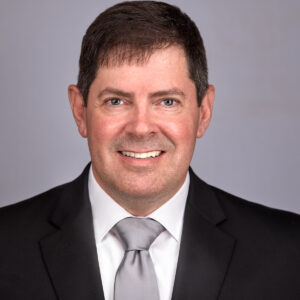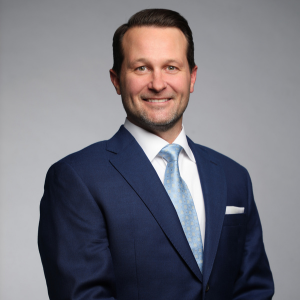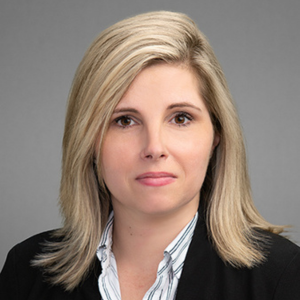Successful succession planning
The core of “succession” is the word “success.” An effective board knows that changes in the CEO are inevitable through retirement, illness, death, or job change. Preparation for any of these events requires succession planning to maximize the probability of continued organizational success.
What is required for good CEO succession planning? The foundation is effective governance based on board-defined core values and application principles that guide both governing and operating decisions and actions. Consistent application of core values and principles is the key to organizational integrity.
The primary way core values and principles are openly and regularly expressed is through the organizational culture. The CEO, the primary determinate of the culture because of position and presence, must embody the organization’s core values and principles. The culture includes staff behaviors that are rewarded and punished; how staff members treat each other, customers, and visitors; how decisions are made; organizational accomplishments that are celebrated; and other organizational practices. Through its selection of the CEO, the board has significant influence on this culture.
When CEO succession is desired, finding someone outside the organization who believes in its core values and principles and can maintain its desired culture is difficult. Information on candidates is secondhand and presents them in the best light. Therefore, the probability of succession with an external CEO is poor. This was demonstrated in the book Good to Great by Jim Collins, where 10 of the 11 companies identified as “great” selected their CEOs from within. Knowledge of both weaknesses and strengths of internal candidates makes internal succession more probable.
CASE STUDY
Evergreen Retirement Community, a Christian organization, experienced this succession planning concept from 2000 to 2005. The process evolved from a conflict within the board when a small group of members attempted to take Evergreen into a merger opposed by the board chair, the residents, and me. When the merger initiative was called off in August 1999, the board was considerably divided.
In early 2000, the losing group initiated a “succession planning” committee with the hidden agenda of forcing me into retirement because of my opposition to the merger. After the initiative failed and its initiators resigned, the committee moved ahead by retaining an organizational development consultant.
The consultant’s first step was to identify the desired characteristics of a CEO by using sets of 67 cards, each with a positive CEO characteristic. The board, residents’ council, and senior management team divided into groups of three, each with a set of cards. Each group unanimously divided the characteristics into three equal piles: very important, important, and less important. The results from all small groups provided a mathematically prioritized list of characteristics for the CEO. For Evergreen, a natural break occurred after 12, which the board divided into two categories-values-based and skills-based-with the former being higher priority.
The next steps were to (a) identify potential internal candidates, (b) determine how their individual abilities compared with the 12 desired characteristics, and (c) assist each to prepare a personal development plan to address gaps between his/her abilities and the desired characteristics. As preparation for these steps, the consultant led five half-day management/leadership training and testing sessions for the five members of the senior management team (including me). The team recognized that the training and testing would be appropriate for all staff with managerial or organization-wide responsibilities, so it included them as preparation for second-level succession planning.
At the conclusion of the sessions, each member of senior management who was interested in being considered for CEO was asked to release the results of his or her management/leadership testing to the board. The consultant reviewed the results with the team member and me so I could assist in creating a personal development plan.
The consultant also had me assist each candidate find an outside mentor with significant management and leadership experience. I recruited professional colleagues from an executive dialogue group who met periodically with a candidate for a couple of years. Two of the candidates were not licensed as nursing home administrators; I assisted them in starting this process. The third candidate did not have a graduate degree; I encouraged his enrollment in a weekend MPA program.
In 2001, the board provided funding for senior management team development, requesting periodic reports on how the funds were used and the impact on the team, but not specific outcomes. The team had no idea how to use the funds, so it explored many options. In the spring of 2002, a friend gave me a book, God Is My CEO by Larry Julian, a management consultant. I found it valuable and shared portions with the team, who requested copies to read together. After a few weeks, the team suggested I ask the author to assist with team development. He was fascinated by our unique request, so he accepted.
TEAM DEVELOPMENT
On his initial visit to Evergreen in January 2003, Julian spent the first day interviewing individual team members and the second with the entire team creating a team development plan. The plan included finishing reading together his book, rotating among all members the facilitating and recording responsibilities for team meetings, and sharing the commitment for opening and closing prayers at each meeting. By assuming team leadership duties, each team member developed the capacity to become both leader and follower.
Reading Julian’s Christian-based management book and incorporating prayer into the meeting were important steps in the team development process. Keeping the team working together through the multiyear succession planning process was essential for the long-term health of the organization. This could only be accomplished by individual team members intentionally setting aside self-interest for the best interest of the organization.
In November 2003, Julian returned for another two-day visit. He identified Bible passages dealing with leadership, teamwork, and succession. Each team member was asked to write out what the passages communicated to him or her.
In a retreat setting, the group discussed these passages. All members recognized that this Christian-based succession planning process was leading them to an appreciation of the power of a team built upon shared values that elevate the long-term best interest of the organization over the self-interest of any individual.
The second day, Julian assisted with creating a team development plan for 2004, which included selecting another book to read together. The team chose The Purpose Driven Life by Rick Warren. That afternoon, he met with the board to share the significance of the succession planning process they had initiated and the beneficial way it was being implemented.
SUCCESSION
In mid-2004, it was agreed that I would retire in 2005. The board met with Julian in September 2004 to plan the final stage of succession planning which included the following:
Conduct full-board in-depth interviews with candidates.
Prepare survey forms for residents and staff to evaluate candidates.
Review results of the 2000 management/leadership testing.
Have an organizational development consultant interview candidates.
To protect its options, the board publicly stated it would do an external search if not fully satisfied with at least one of the internal candidates.
Shortly thereafter, one of the three candidates withdrew for personal reasons. The board felt sufficiently positive about the two remaining candidates to continue with an in-depth assessment of each. To protect its options, the board publicly stated it would do an external search if not fully satisfied with at least one of the internal candidates.
In January 2005, all 18 board members met to select the CEO or, if necessary, begin an external search. Board policy required a two-third majority vote to select a new CEO. Before this meeting, each member was provided the same information about both candidates. No discussion of their comparative merits had occurred during or between meetings. At this meeting, a “straw vote” was taken; one candidate received more than the two-third majority. After everyone was given an opportunity to share the reason for his or her vote, an official vote was taken. The new CEO was selected unanimously.
TRANSITION
Both candidates and I were notified immediately after the decision. Because an external search was not needed, the transition could occur quickly-within about six weeks. The transition was also shortened because during the previous two years, I delegated most operational responsibilities to others in senior management so I could be project manager for a major construction project completed in 2004.
The new CEO, who had been the COO, distributed many of his prior responsibilities to other staff, including the other CEO candidate. This delegation enhanced their leadership roles and supported career development. The result was that all members of the senior management team participating in the succession planning process remained at Evergreen for at least five years after the transition.
The result was that all members of the senior management team participating in the succession planning process remained at Evergreen for at least five years after the transition.
CONCLUSION
The succession planning process, initiated and carried out by the Evergreen Board with the support of the CEO and senior management, preserved a unique organizational culture that had evolved over almost three decades while building new organizational capacity for the future. LTL
David A. Green served as CEO of Evergreen Retirement Community, Oshkosh, Wisconsin, for 29 years prior to his retirement. Because of his relationship with the University of Wisconsin-Oshkosh (UWO) during those years, the volunteer position of Executive in Residence at the UWO’s Business Success Center was created for him. He also received an Honorary Doctorate from UWO in 2006. He is currently the Director of Conceptual Planning and Development for China Senior Care, Inc., which is developing skilled nursing facilities in China. For further information, phone (920) 235-2702 or e-mail
greend@uwosh.edu. Long-Term Living 2011 February;60(2):42-44
I Advance Senior Care is the industry-leading source for practical, in-depth, business-building, and resident care information for owners, executives, administrators, and directors of nursing at assisted living communities, skilled nursing facilities, post-acute facilities, and continuing care retirement communities. The I Advance Senior Care editorial team and industry experts provide market analysis, strategic direction, policy commentary, clinical best-practices, business management, and technology breakthroughs.
I Advance Senior Care is part of the Institute for the Advancement of Senior Care and published by Plain-English Health Care.
Related Articles
Topics: Articles , Facility management , Leadership











